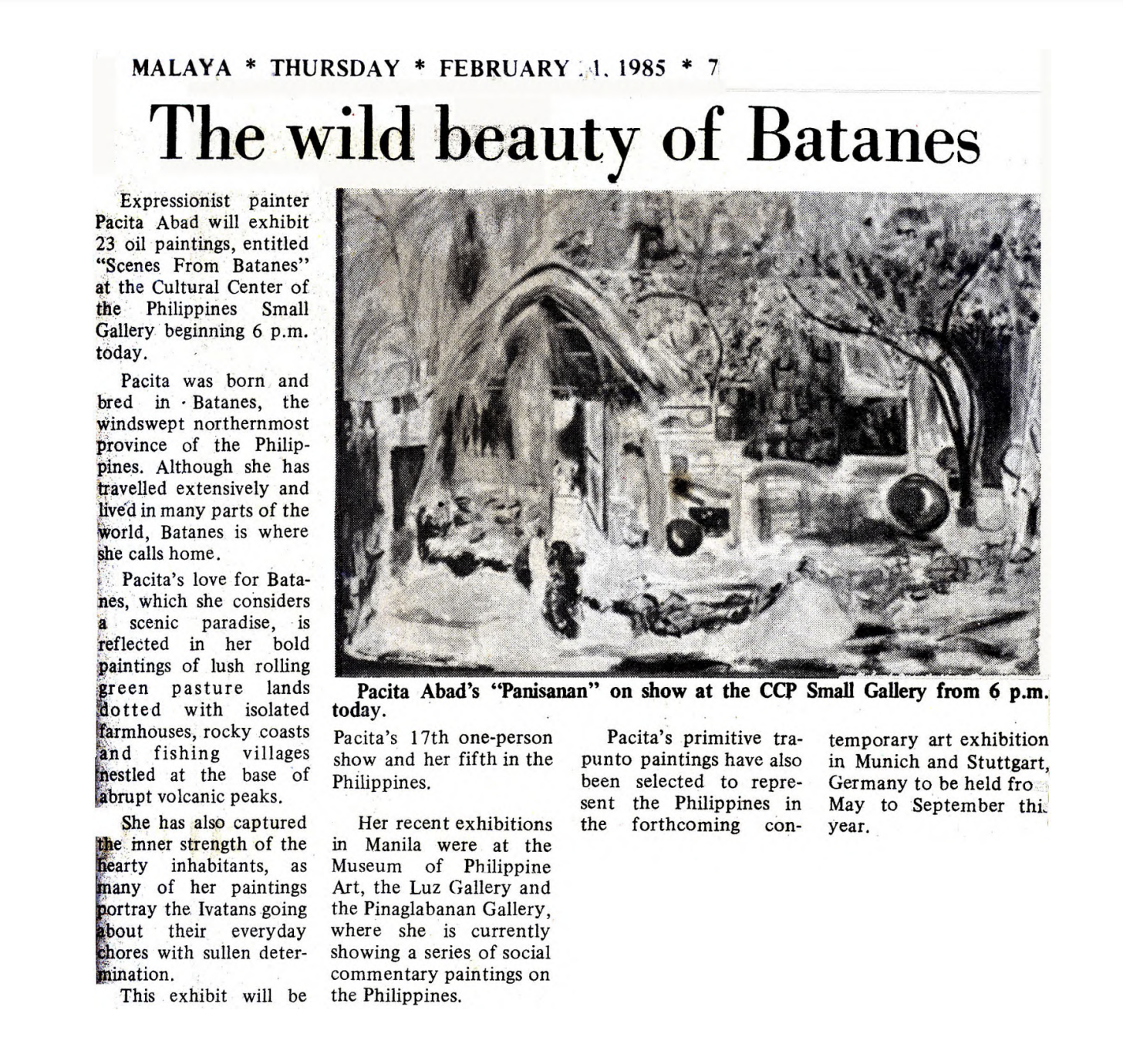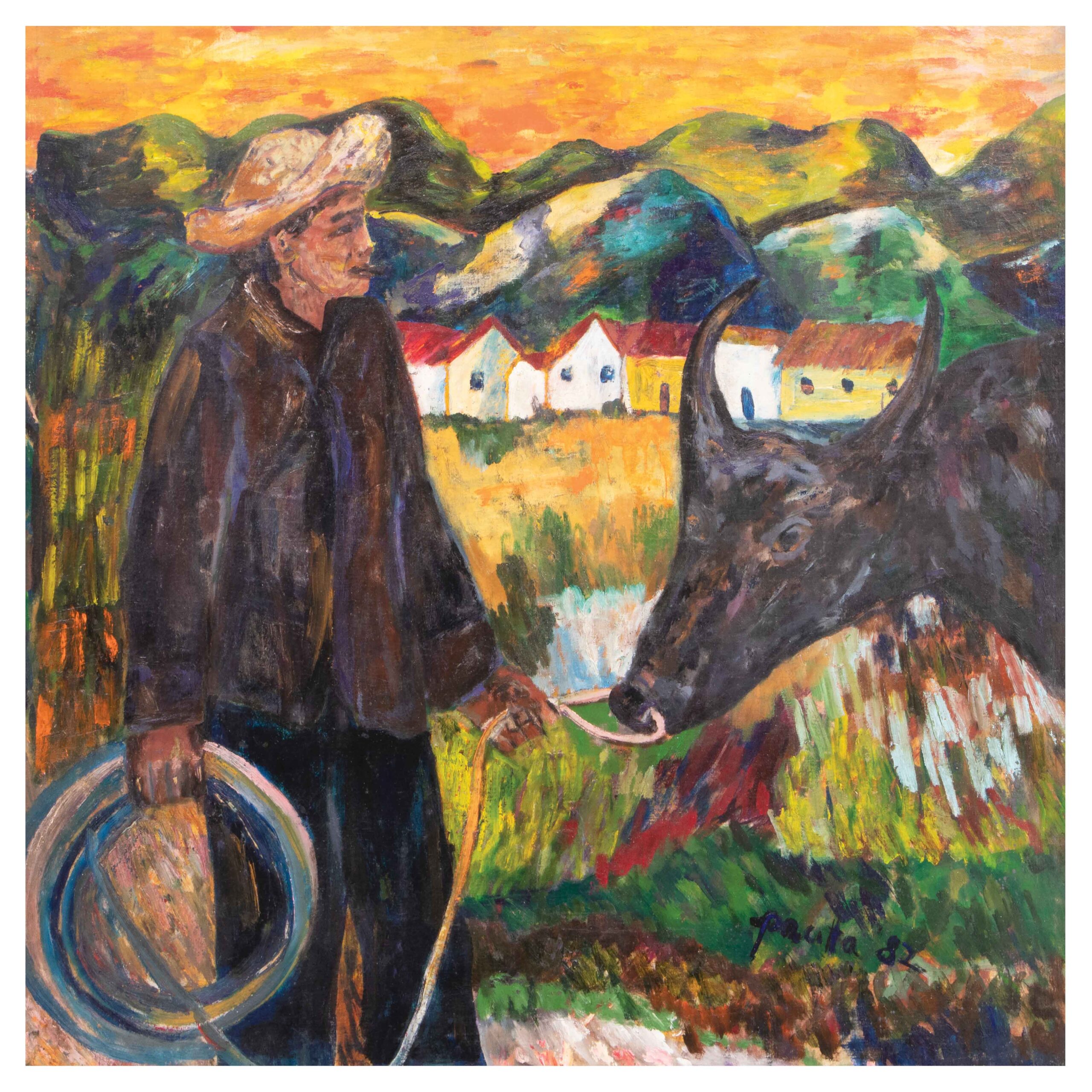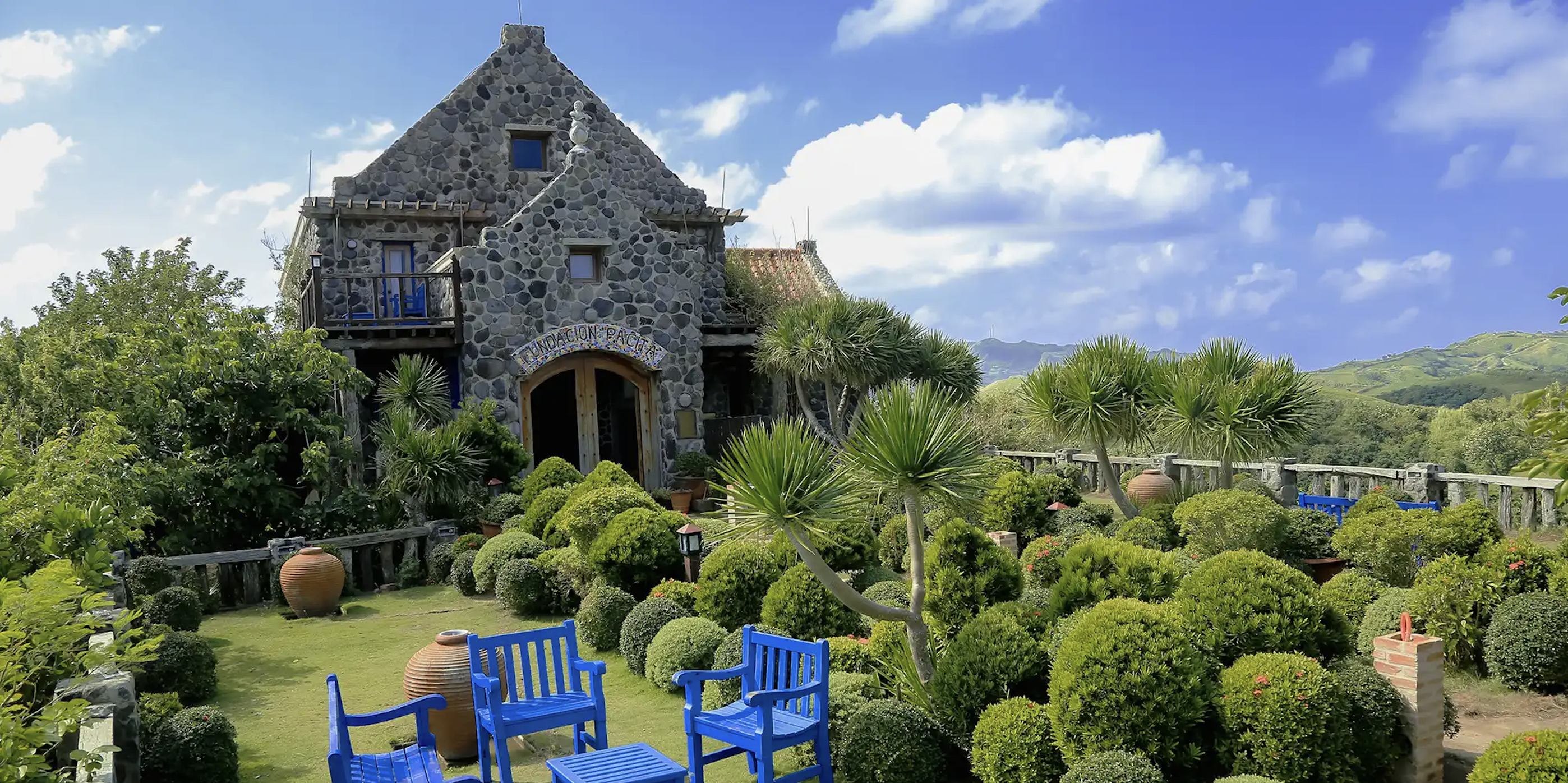– 50 mins ago
From a childhood memory to an art world rediscovery, Pacita Abad’s ‘Sapuno’ shines light on her Batanes roots
While celebrated Filipino artist Pacita Abad (1946-2004) is renowned for her vibrant mixed media works that captured the essence of her global travels with her husband, Asian Development Bank (ADB) executive Jack Garrity, it was always Batanes that she called home. The emerald rolling hills and windswept meadows of the northernmost province of the Philippines are vividly depicted in her newly rediscovered 1985 painting “Sapuno.”

“Sapuno” is a departure from her distinct trapunto works that showcase African influence or depictions of the immigrant experience. It is set to go on the block at the “The Spectacular Mid Year Auction” at Leon Gallery this weekend, with all proceeds benefiting Unang Hakbang Foundation, a nonprofit dedicated to empowering underprivileged children through education.
The long-lost painting at Leon
“Sapuno” is a striking expressionist work that depicts a domestic scene from Abad’s childhood in Batanes. The painting was part of Abad’s 1985 solo exhibition “Paintings of People and Landscapes of Batanes” at the Cultural Center of the Philippines, curated by the renowned Ray Albano. The works in the exhibit capture Abad’s hometown, with paintings of the pebbly coastlines and squat houses distinct to the province, built with heavy stones to withstand the weather. It portrays the Ivatan people, the Indigenous inhabitants of the area, going about their daily lives with stoic expressions.

The highlighted painting shows an atmospheric scene of palm trees, huts, and a mountain backdrop, through a bright, honest, and almost naive and childlike lens.
In the auction catalog, “Sapuno” is described as “a love letter to the artist’s home… In Sapuno, we see the exterior of a local household. Pots and pans are seen left out to dry in the yard, while on the ground we see domesticated birds, pecking at the ground for feed and sustenance. The work is a rare glimpse not only of life in Batanes during the time, but Abad’s own inner world.”

For years, the painting was presumed lost until it resurfaced in the collection of an anonymous owner who had a personal connection to Abad through a mutual friend at ADB. The owner recalls Abad’s description of the painting as “an image from her childhood” and “a memory of her backyard in Batanes.”
The owner recalls buying the painting for a small sum years before, a contrast to the current starting price of P500,000.
The painting was authenticated by her former husband Garrity, and the Pacita Abad estate.
Pacita Abad’s Batanes roots
The painting “Sapuno” hits close to home for Abad, who was born in Basco, Batanes, the fifth of 13 children to parents who were politicians in the province. When Abad pursued political science and law studies at the University of the Philippines, her family became entangled in the regime of former dictator President Ferdinand Marcos after her father fell victim to election fraud.
After helming student demonstrations opposing Marcos’ rule, their family home in Manila was sprayed with bullets, prompting Abad’s family to urge her to leave the country for her safety. Despite this turbulent period driving her away from her roots, the emerald hills and windswept shores of Batanes depicted in “Sapuno” hark back to Abad’s origins before her life as a globetrotting artist truly began.
READ MORE: These are the coolest streets in the Philippines—literally
While Abad’s artistic journey took her to artist studios around the globe, from Washington, New York, Bangkok, and Bangladesh in the 1970s to Boston, Jakarta, and Singapore in the 1990s, “Sapuno” once again depicts Abad’s nostalgic reminiscence of her roots, a meaningful place she always called home despite her incessant travels.

“Fundacion Pacita” in Batanes was built by Abad, her husband, and her brother Butch in 2001, upon finding out she had cancer. According to Abad’s estate: “Once she realized that her cancer was fatal, she decided that she wanted to die in her Batanes studio overlooking the ocean. After spending two weeks on her last trip to Batanes, she was grudgingly convinced that she had to return to Singapore in order to receive proper medical treatment that was simply not available on the island. After her death, Pacita’s ashes were brought back to Batanes.” (Jed Daya)
**
While the painting of Batanes may seem like a departure from Abad’s well-known trapuntos, with experimentations of unconventional materials like plastic buttons, tiny mirrors, and raw materials—from shells in Papua New Guinea to South Asian textiles—the upcoming auction of “Sapuno” presents a unique opportunity for collectors to acquire a piece of Philippine art history while supporting a worthy cause with proceeds to Unang Hakbang Foundation.
READ MORE: Artist Pacita Abad’s trapuntos on immigrant experience to be exhibited at the Frieze London 2019
As the art world continues to celebrate Abad’s legacy, with recent exhibitions at prestigious venues like the Venice Biennale and the MoMA PS1 in New York, “Sapuno” serves as a reminder of the artist’s roots and her ability to capture the spirit of a place and its people with honesty and warmth.
The Spectacular Mid Year Auction 2024 will take place this June 8, 2024 at 2:00 p.m. at Leon Gallery, G/F Eurovilla 1, VA Rufino cor. Legazpi Streets, Legazpi Village, Makati City, Philippines






